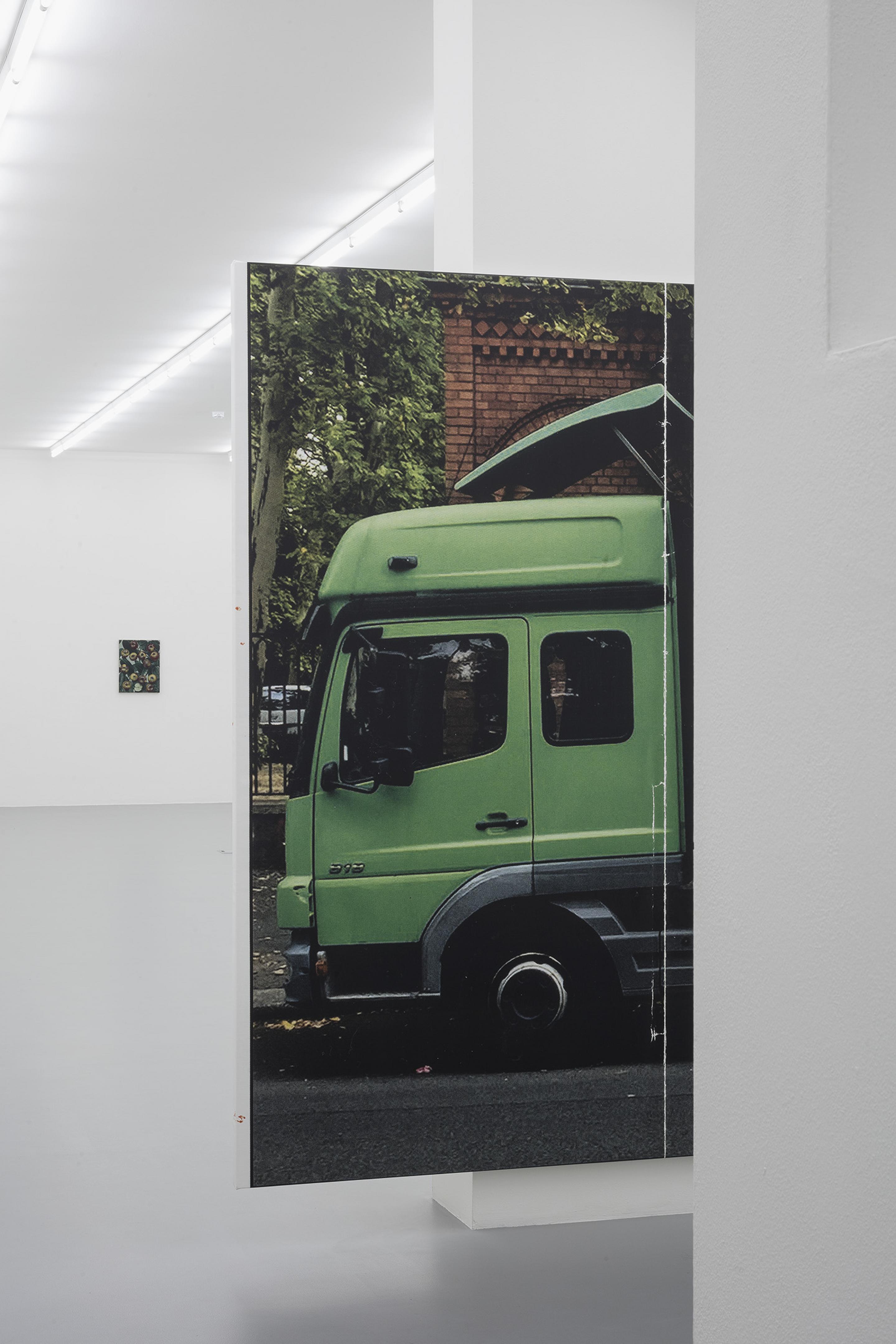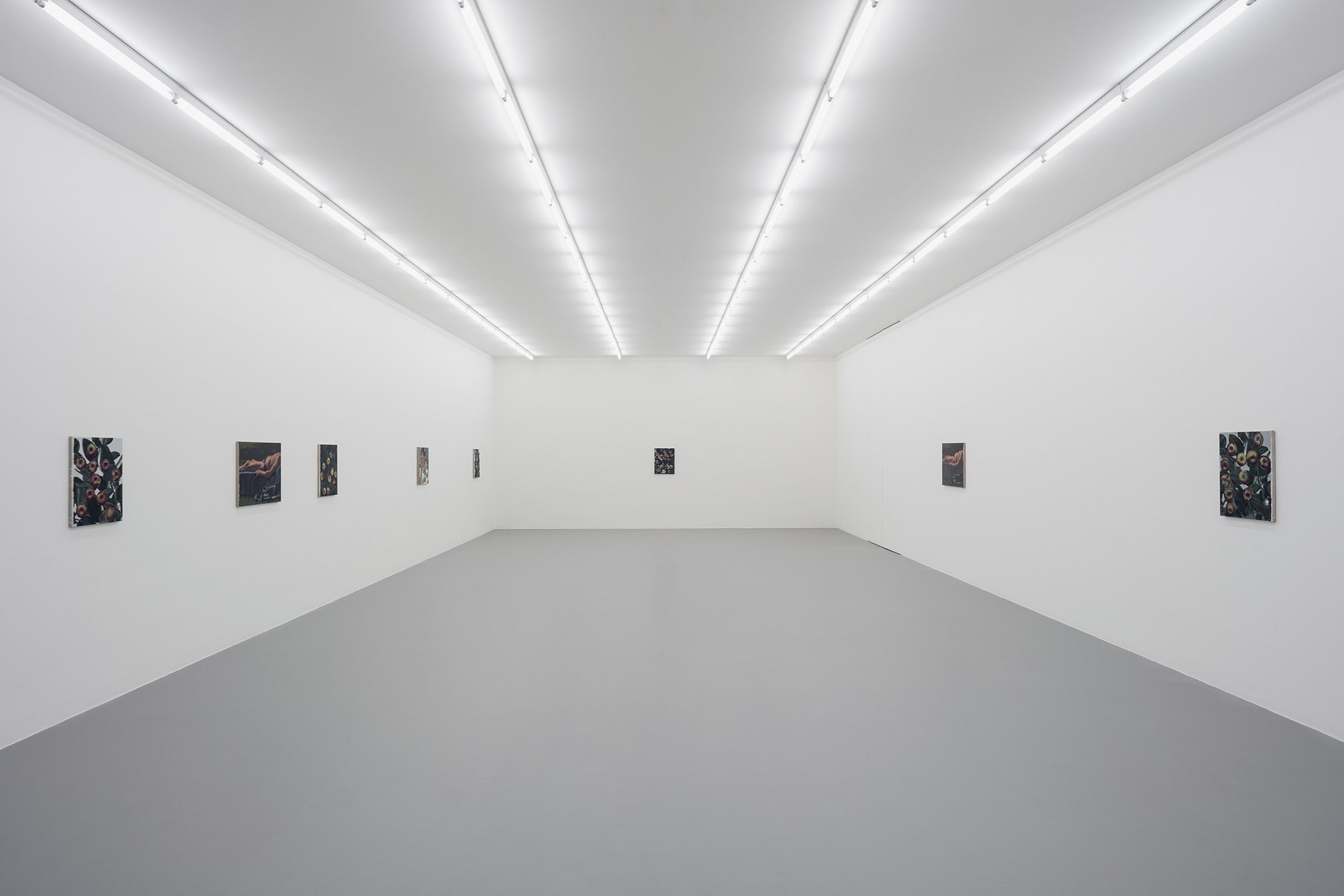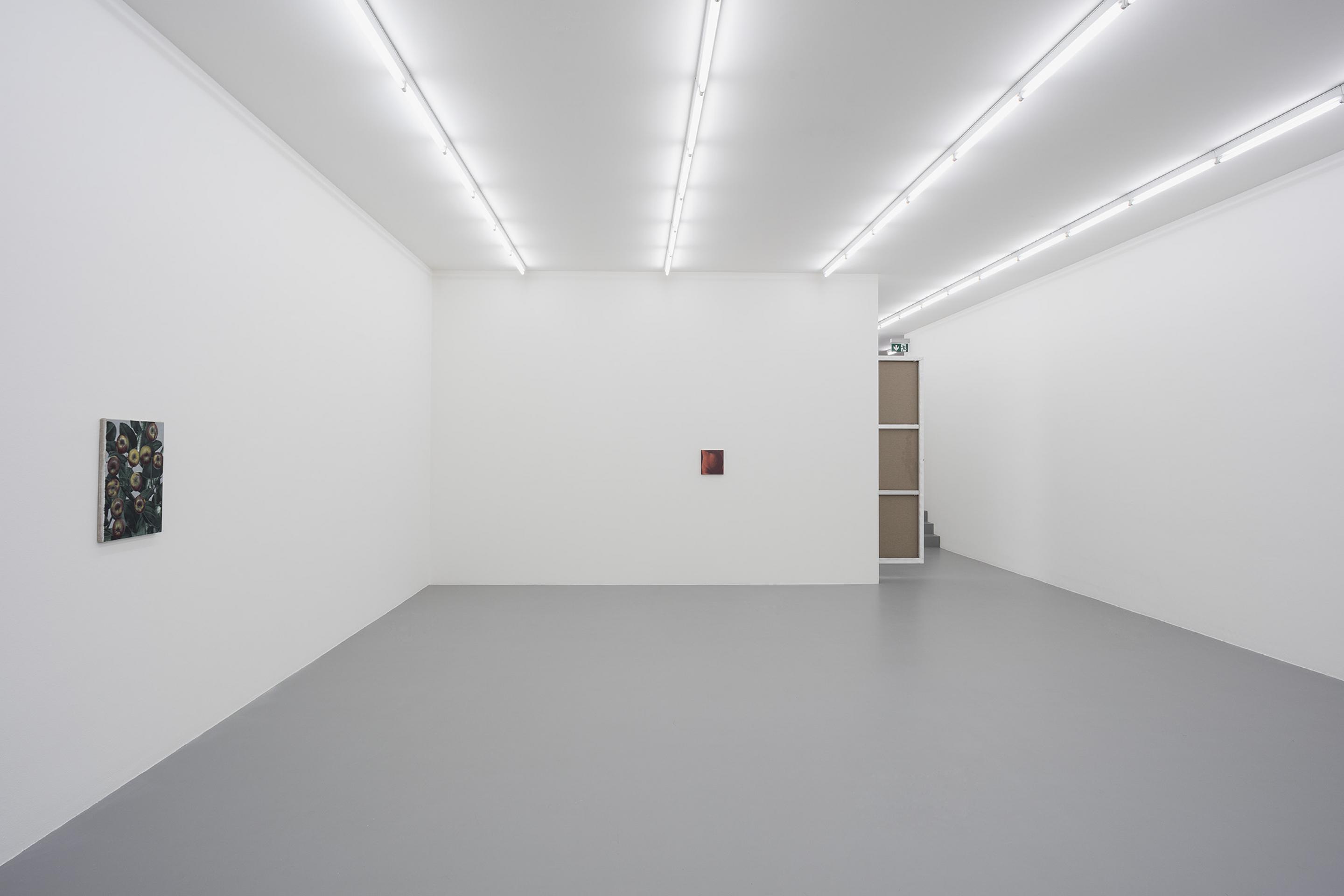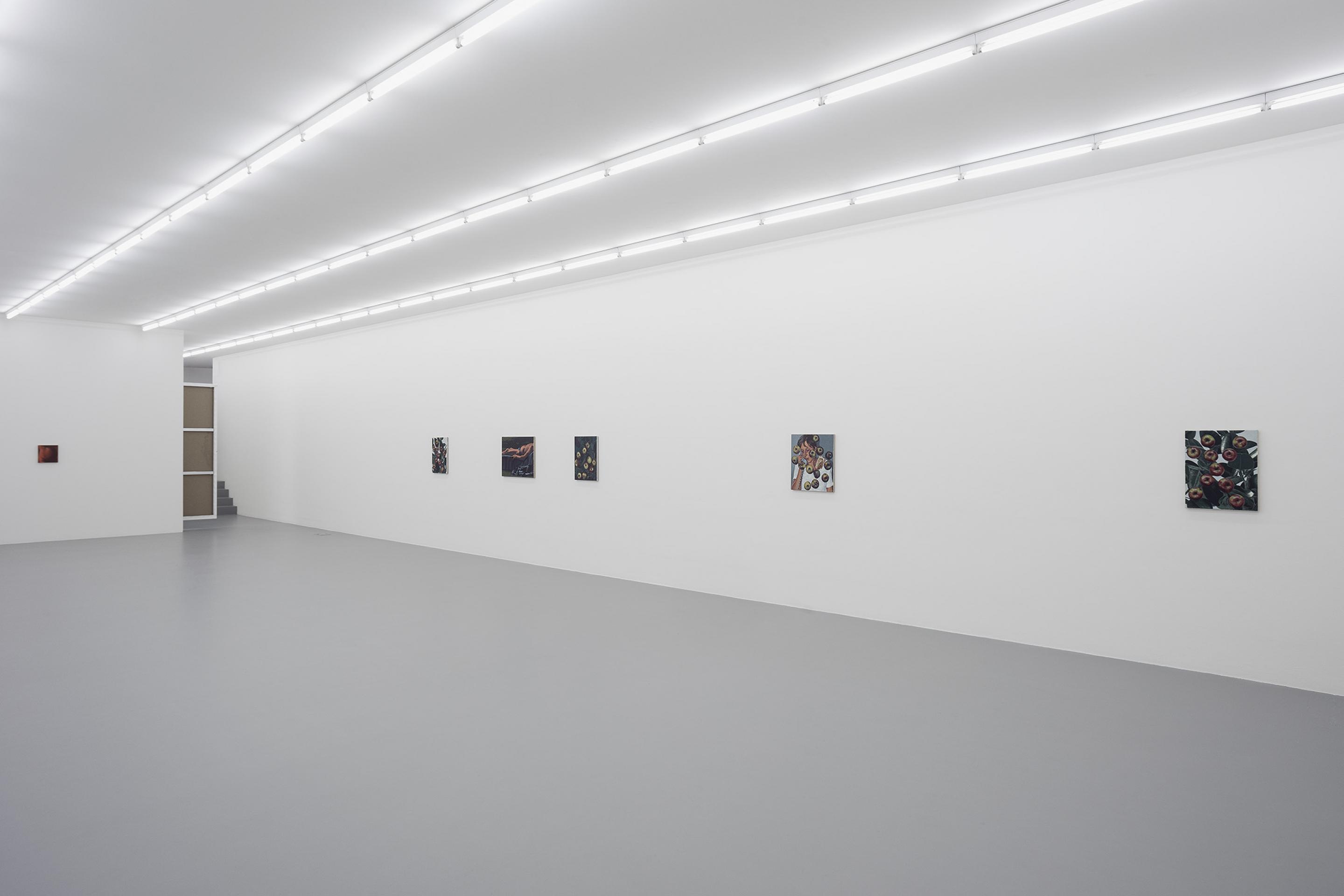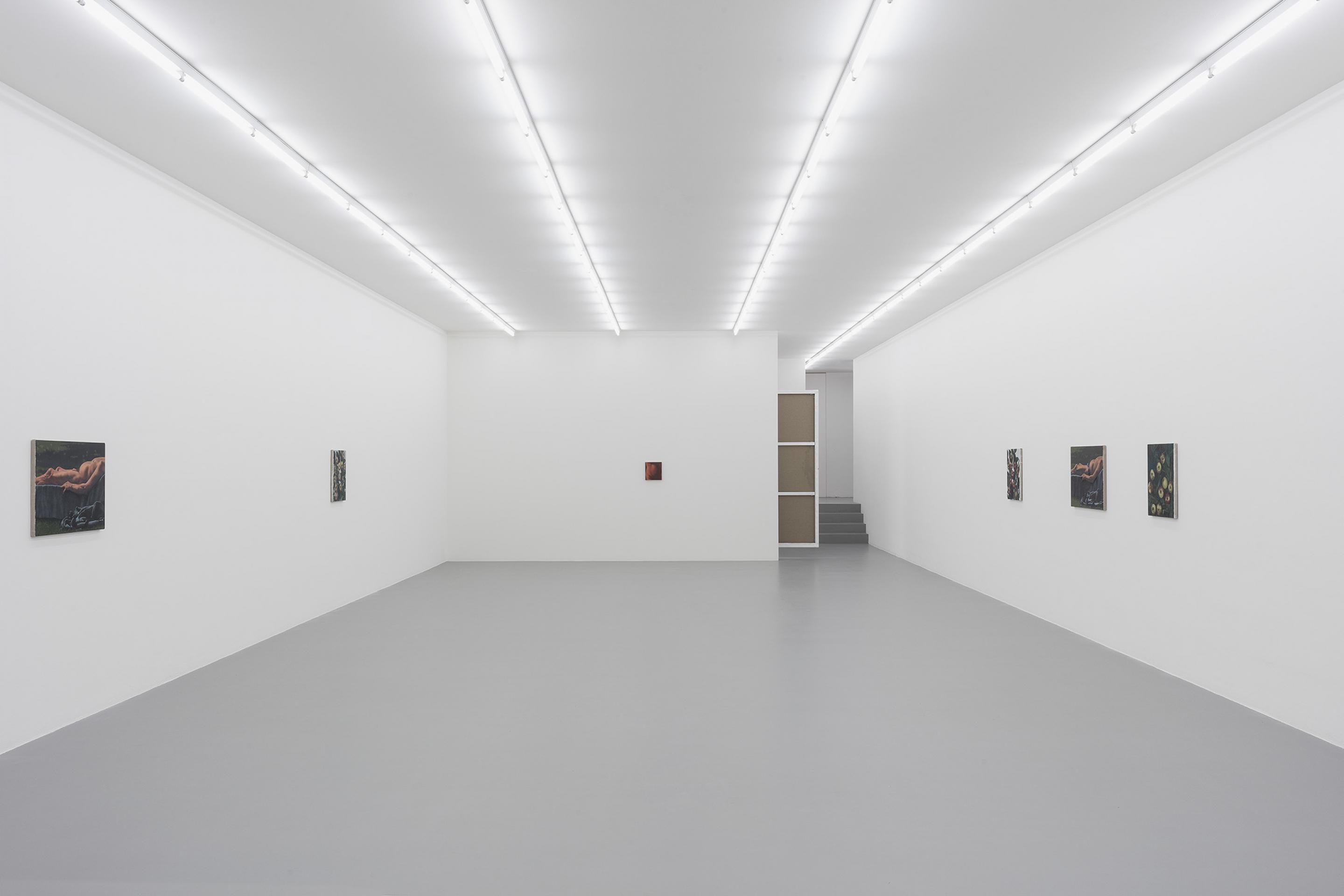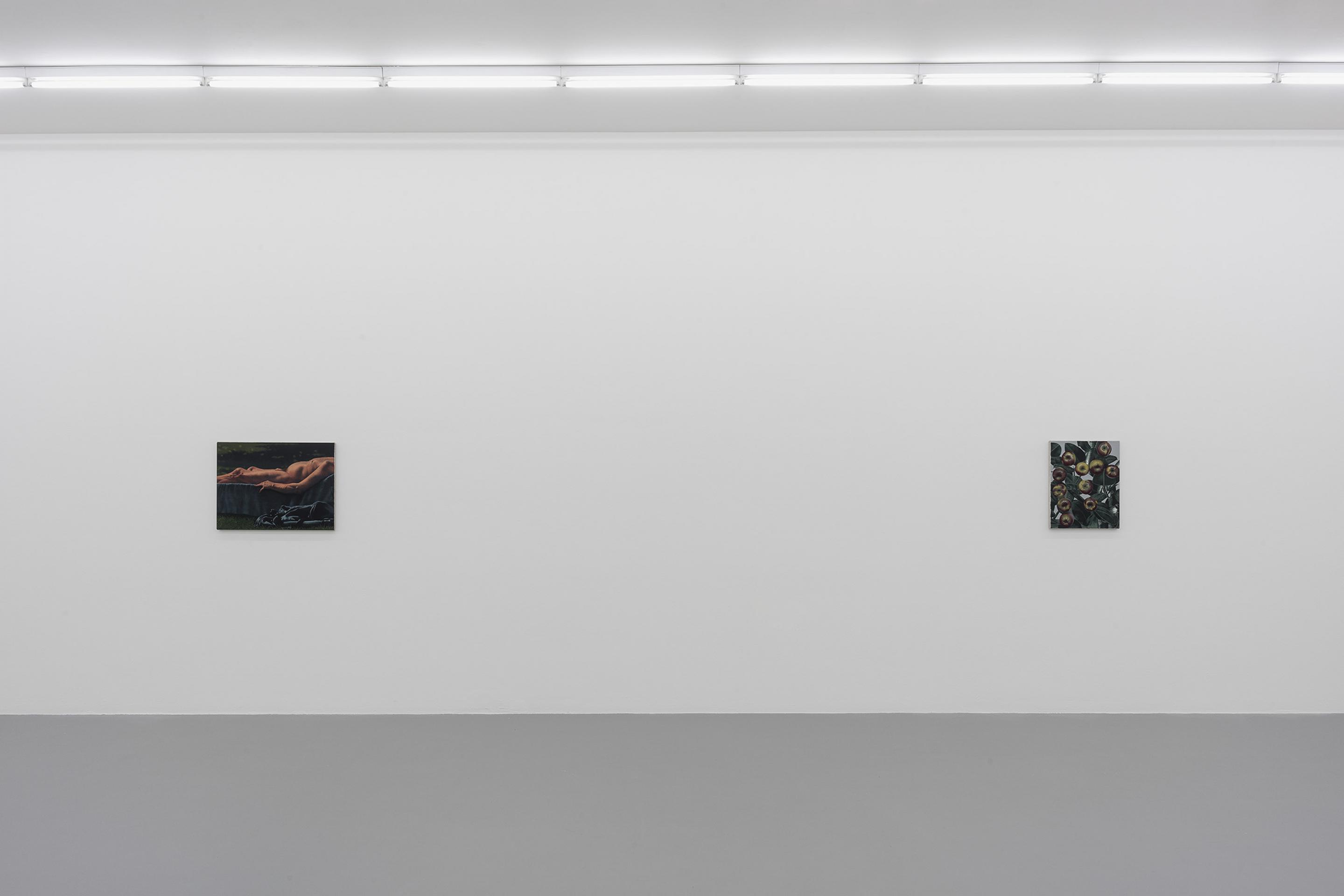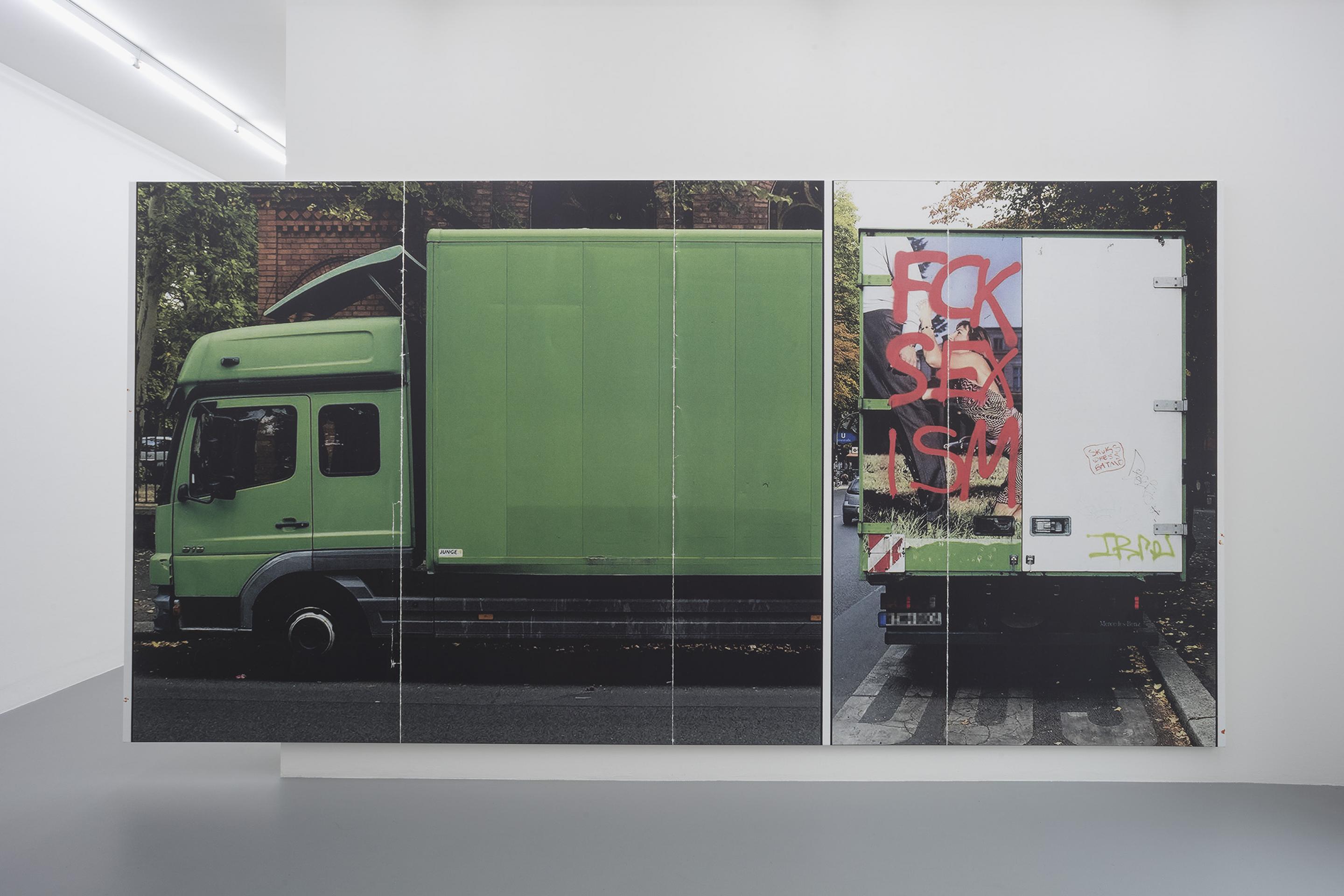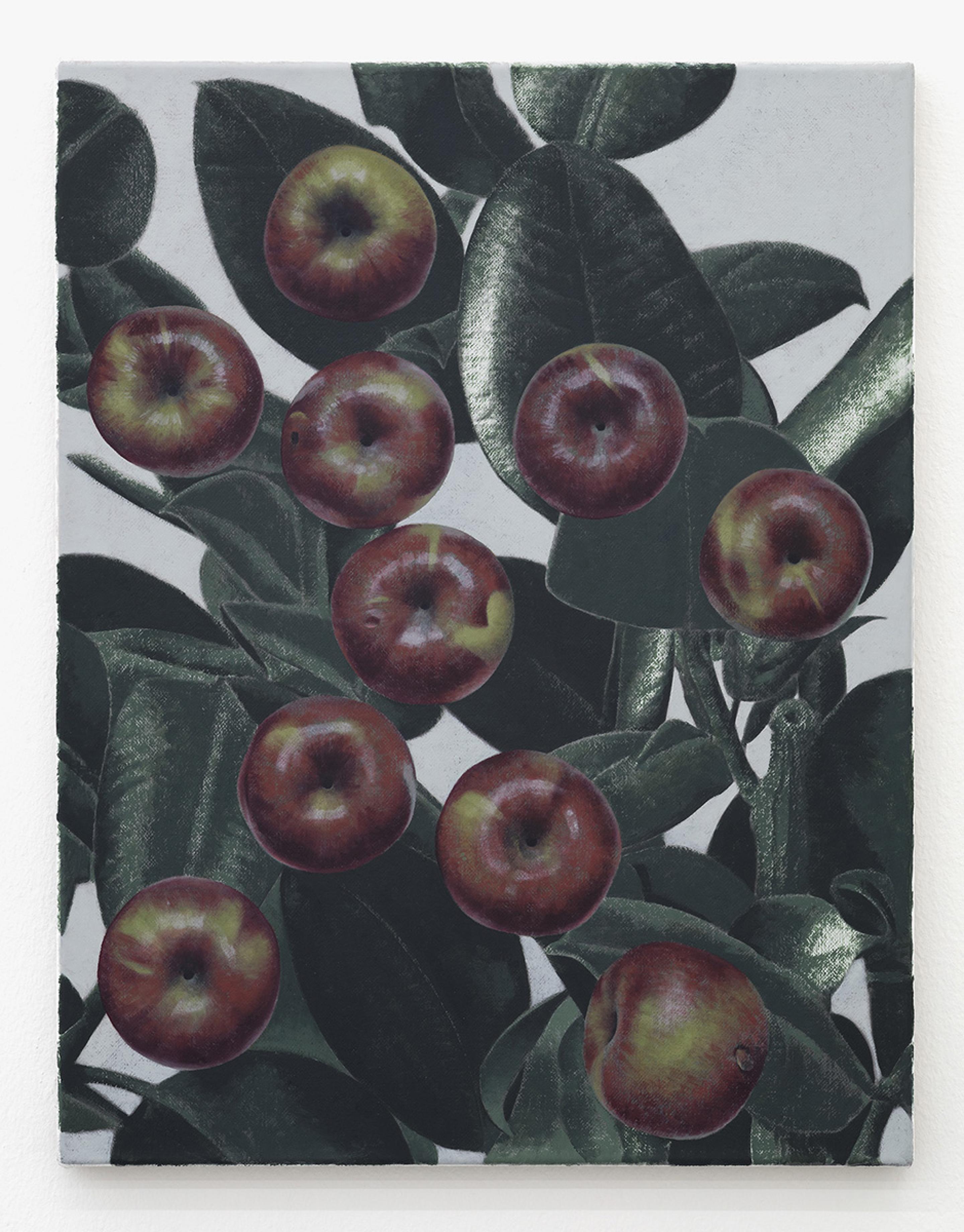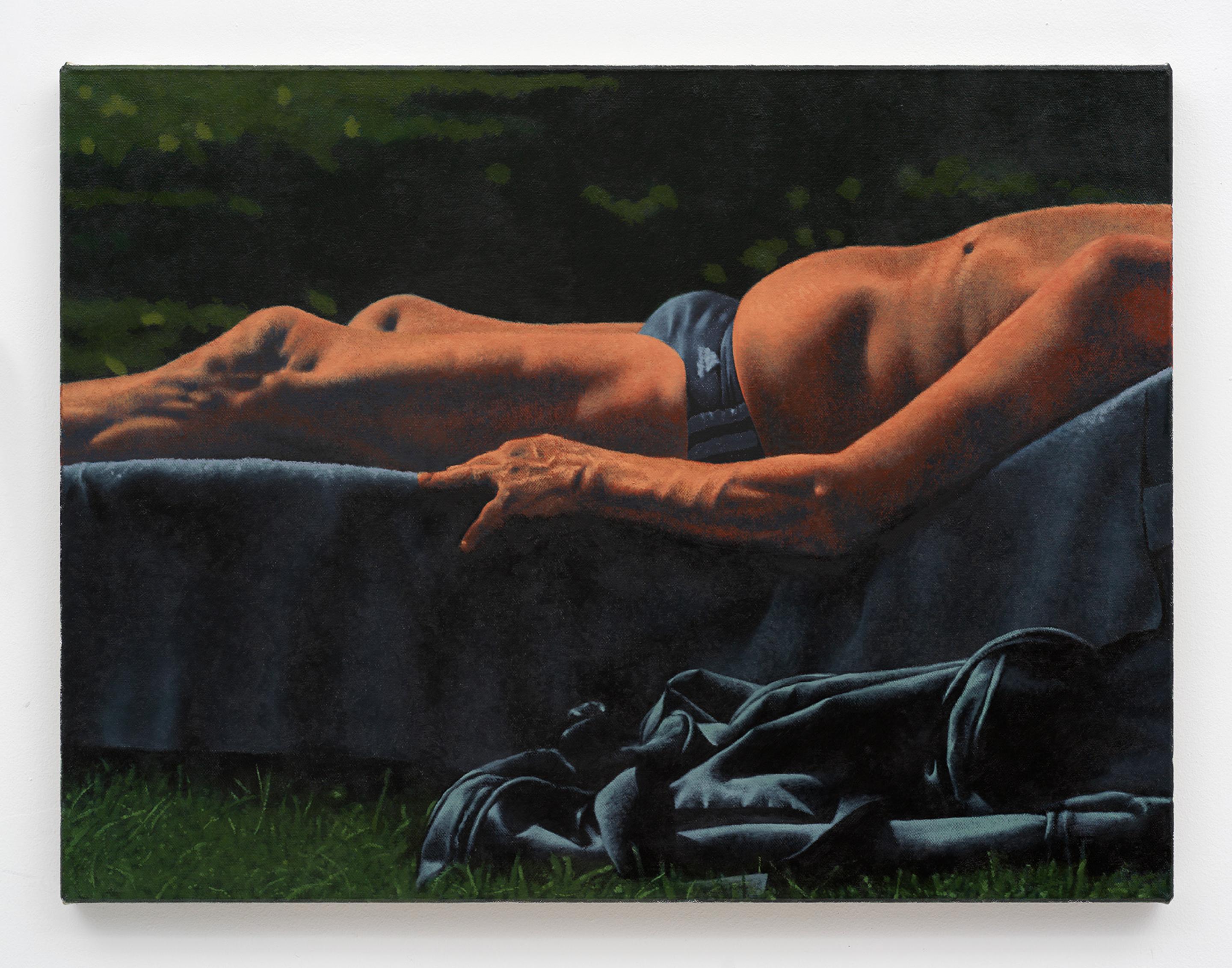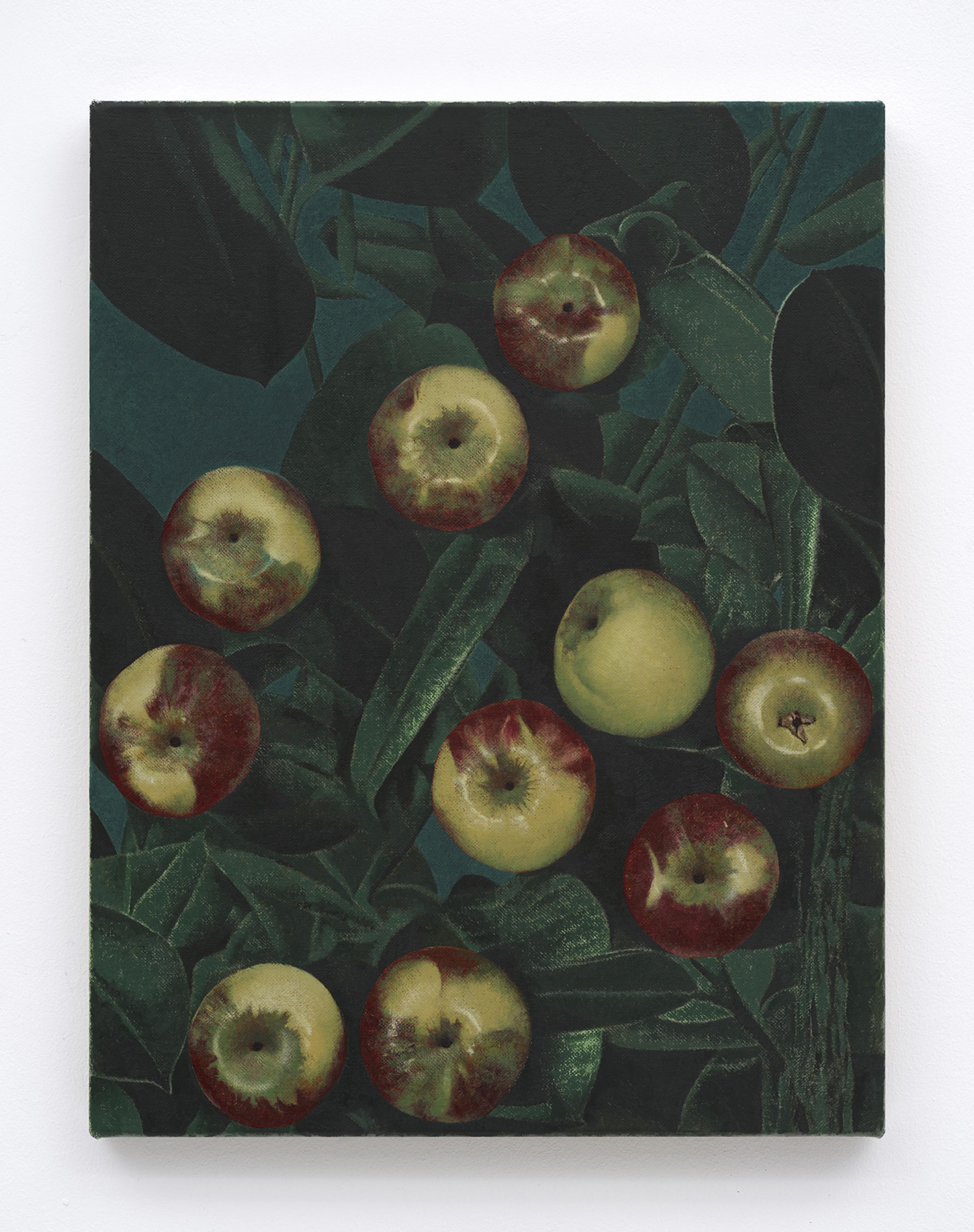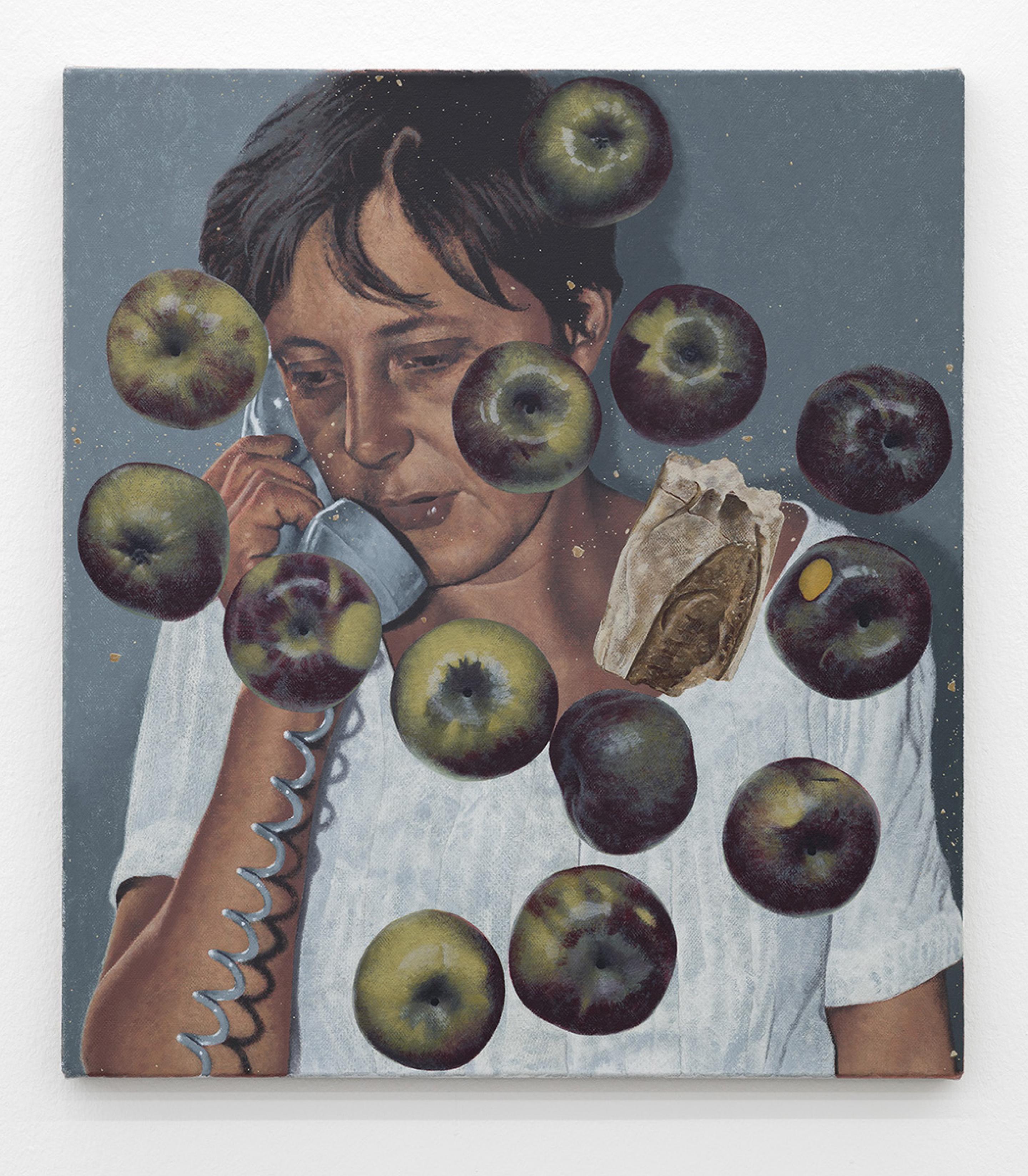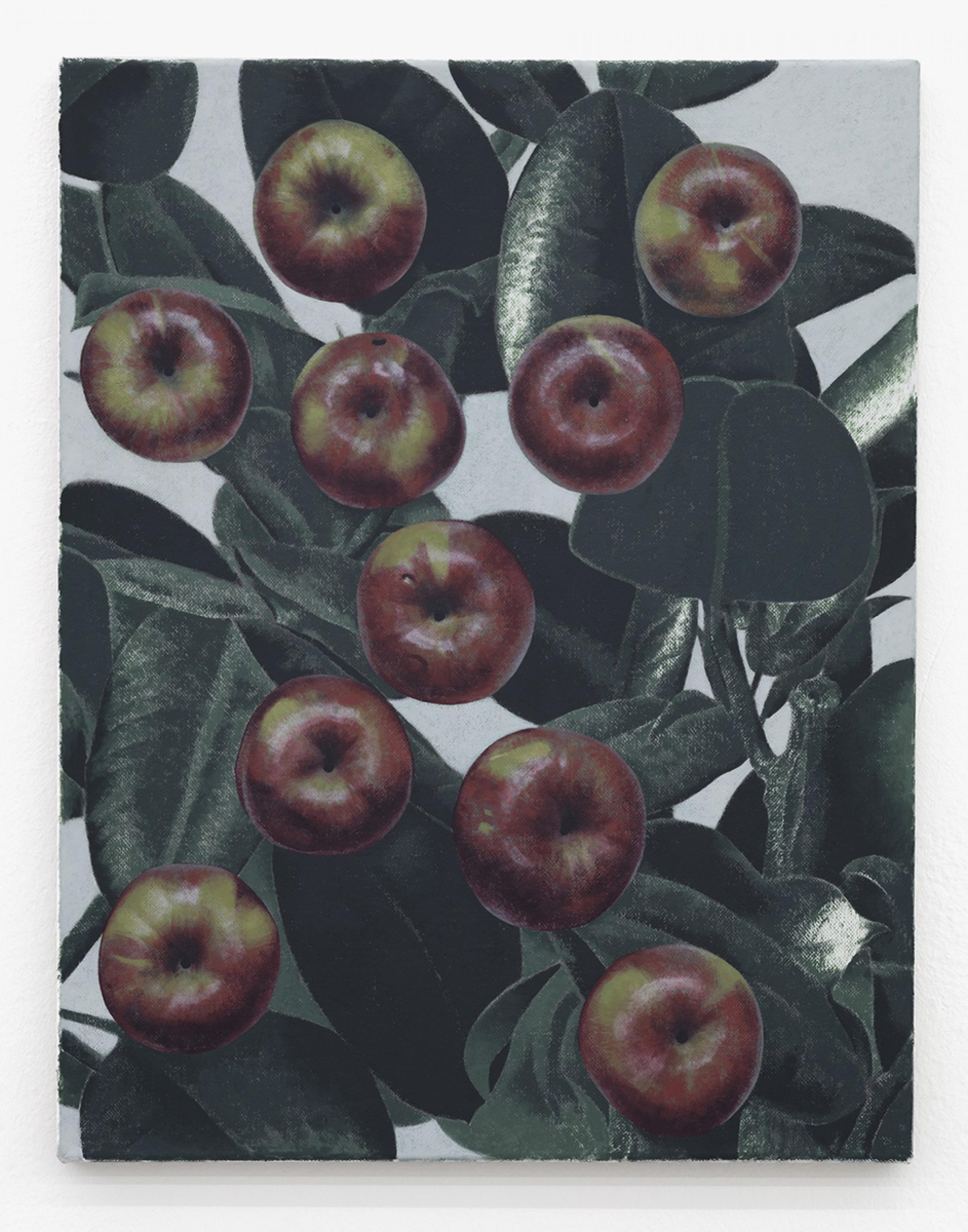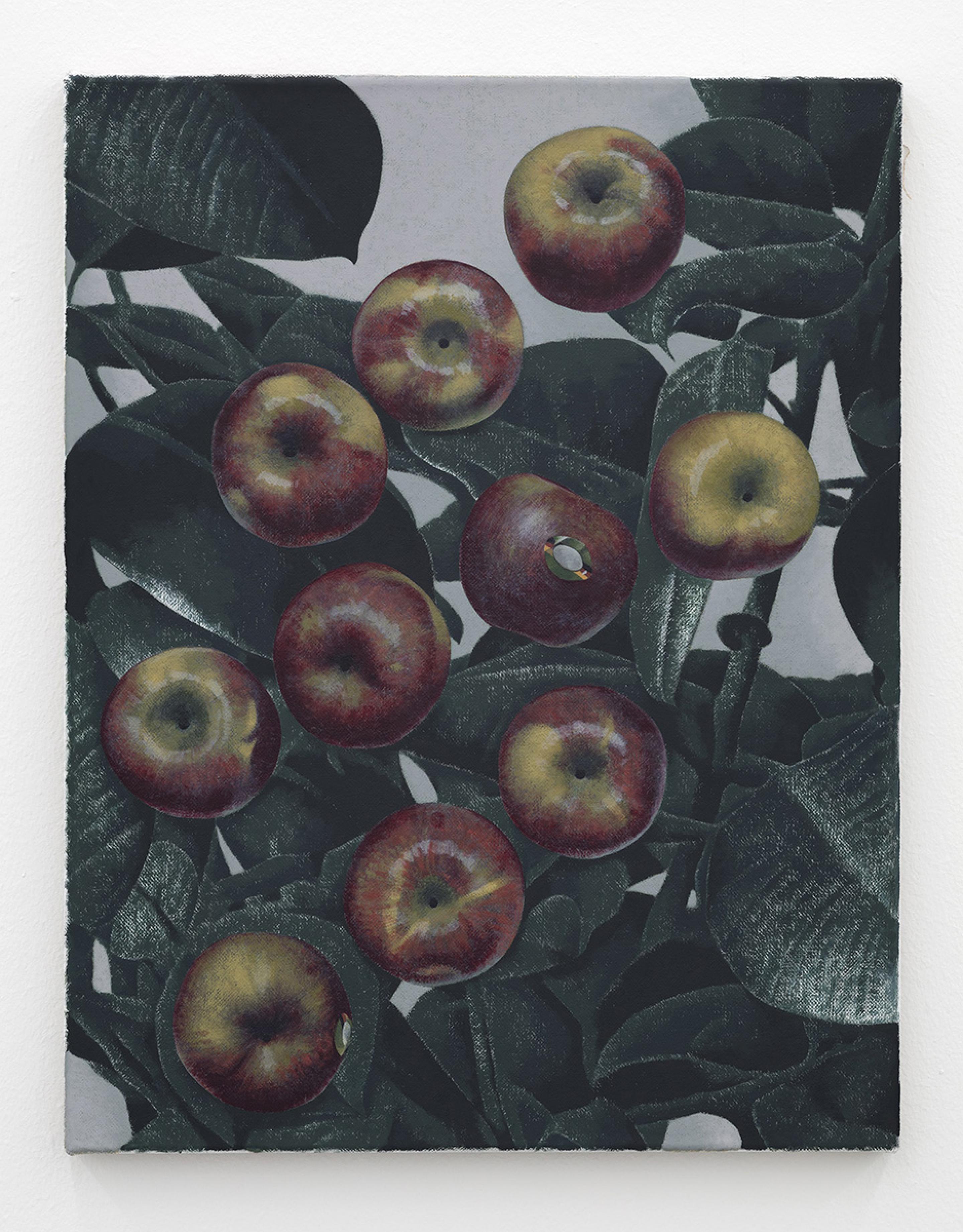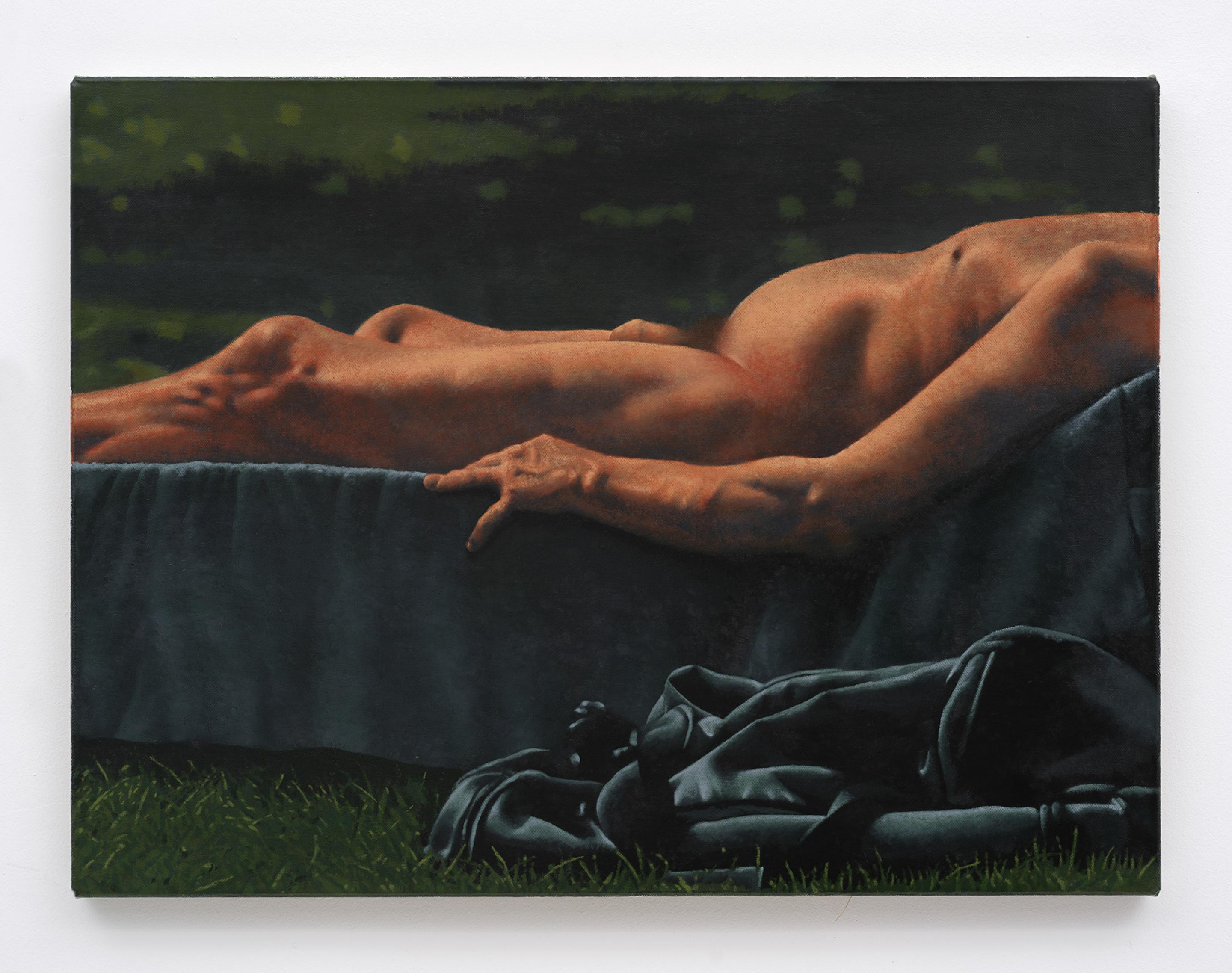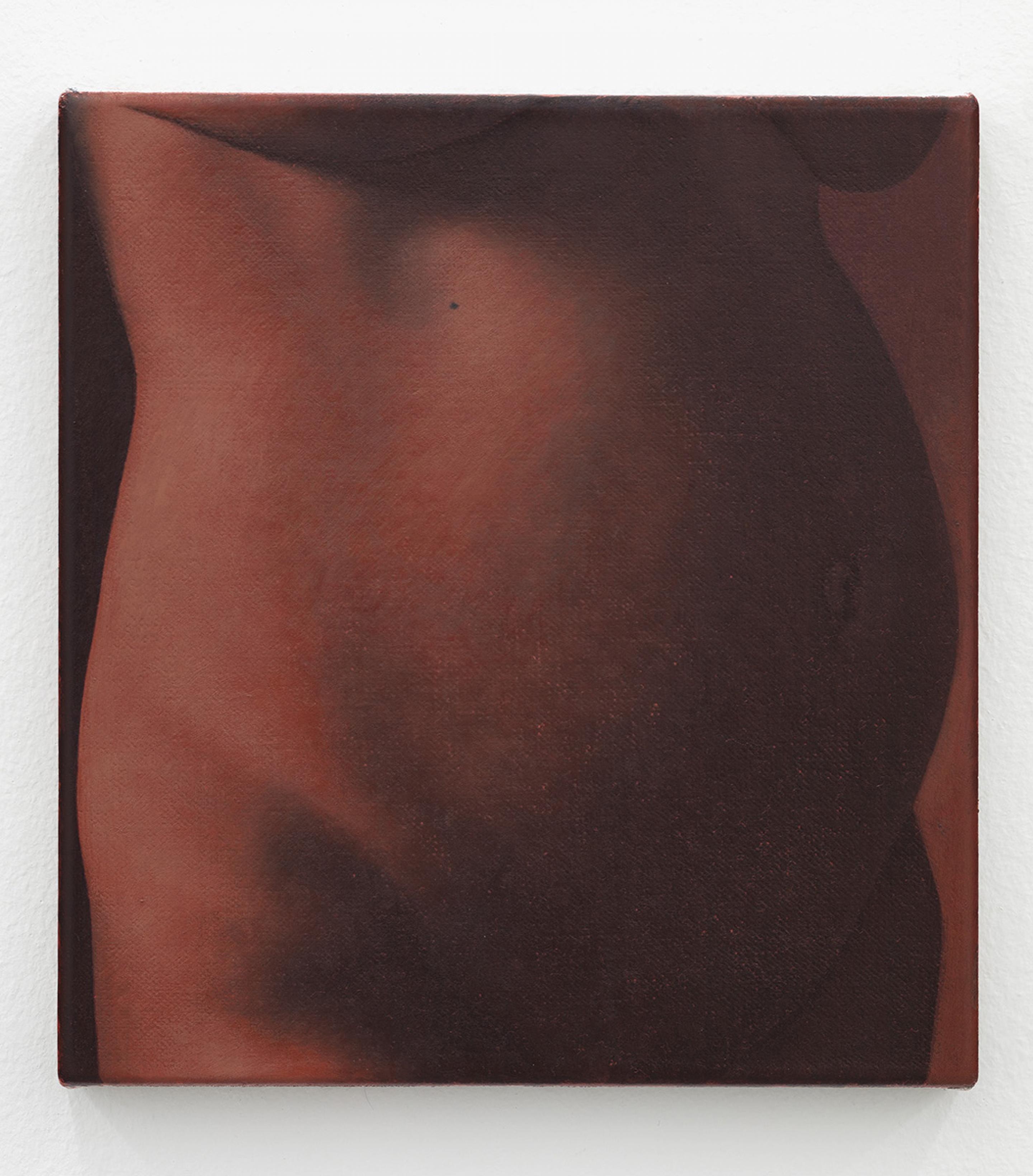OliverOSBORNE
Birth, Education, Leisure, Death
Gió Marconi, Milan
07.02.–16.03.2019
Birth, Education, Leisure, Death
Gió Marconi, Milan
07.02.–16.03.2019
OliverOSBORNE
OliverOSBORNE
IT
Oliver Osborne
Birth, Education, Leisure, Death
Inaugurazione: giovedì 7 febbraio 2019 dalle 19 alle 21
8 febbraio - 16 marzo 2019
martedì - sabato, 11-19
B, E, L, D
La pittura ha metabolizzato molti cadaveri nel corso del tempo, come le metafore desuete che gettano via il linguaggio ordinario (il corpo di un testo). Piante, pane, nudi e mele connotano in questi dipinti un senso generale della storia dell'arte e del linguaggio della pittura, tanto quanto si riferiscono agli oggetti stessi. Il dipinto di una mela, carico di significato allegorico, è un tema così tanto ricorrente e utilizzato da sembrare un'ideale irrealizzabile, che potrebbe trascendere il suo stesso stato di significante e ricevere questo o quel particolare significato. Invece esso è riconoscibile per noi come metafora del significato metaforico, qualcosa che significa il suo stesso potere di significazione. Queste tautologie suggeriscono sovrapposizioni, intricati strati di significato che si oscurano l'un l'altro - oppure potrebbero essere un circuito che continua a riportarci al punto A.
Gli altri dipinti non ci portano molto lontano. I giochi semiotici sembrano intenzionalmente chiusi, come un ventre femminile "gravido" di significato, o il costume da bagno che viene fatto scivolare via per nobilitare l' "Uomo bianco disteso" in un più raffinato "Nudo disteso".
Una giovane Merkel dell'era della RDT complica le cose - ma questa è un'articolata tipologia di realismo - e mi viene ora in mente quanto il centrismo europeo sia anacronistico, proprio come la cornetta del telefono che tiene in mano, quanto tempo fa è stato il ventesimo secolo, e poi andando ancora indietro - come le immagini perdono la loro particolarità nel corso del tempo, e come la pittura placa questo processo, facendo emergere le generalità e le ambiguità dei suoi soggetti. Lo spargimento aleatorio di mele e pane suggerisce che la sua immagine (non il suo ritratto) è appiattita, un simbolo di brevità in questa vanitas.
Henry James ha descritto come le relazioni "non si fermano da nessuna parte" ma è compito dell'artista far sembrare che "esse appaiano farlo felicemente". Quando Oliver Osborne descrive la sua figurazione come una sorta di astrazione, io credo che stia tentando qualcosa di simile - per arrestare in qualche modo l'interpretazione, per impedirle di andare troppo oltre e di riportarla a se stessa. Ci sono modalità formali e materiali attraverso cui l'artista porta avanti questo obiettivo - è seducente vedere la tecnica precisa come risultato di un processo pittorico lento e meticoloso. Ci sono cambiamenti intenzionali nella composizione degli elementi, che rafforzano il senso del metodo, misurate differenze tra "una mela qui" o "una mela lì". Questo non è un silenzio warholiano o uno svuotamento di significato, piuttosto, la loro scansione è come l'afasia indotta dall'enunciazione accurata della stessa parola più e più volte.
Una vocale è ingerita per comporre ‘FCK SEX ISM’. Scritta a spray sull'immagine di una donna colta nell'atto di elemosinare un paio di gambe indifferenti, è un atto del più onesto detournement che regge una forte somiglianza con i primi Adbusters almeno quanto i caratteri tipografici ricordano Christopher Wool. Ripresentato come una grande stampa a pigmenti su tela, presenta un altra stratificazione di codici che riconosciamo dal recente processo pittorico. Nonostante un minimo effetto di distanziamento, la sua secca e decisa affermazione è difficile da estirpare. Questa leggibilità fin troppo facile attira una cerchia sempre più stretta di relazioni, un insieme più insistente e immediato di significati che avvicina il dipinto a qualcosa come la lingua di tutti i giorni.
Eoin Donnelly
Birth, Education, Leisure, Death
Inaugurazione: giovedì 7 febbraio 2019 dalle 19 alle 21
8 febbraio - 16 marzo 2019
martedì - sabato, 11-19
B, E, L, D
La pittura ha metabolizzato molti cadaveri nel corso del tempo, come le metafore desuete che gettano via il linguaggio ordinario (il corpo di un testo). Piante, pane, nudi e mele connotano in questi dipinti un senso generale della storia dell'arte e del linguaggio della pittura, tanto quanto si riferiscono agli oggetti stessi. Il dipinto di una mela, carico di significato allegorico, è un tema così tanto ricorrente e utilizzato da sembrare un'ideale irrealizzabile, che potrebbe trascendere il suo stesso stato di significante e ricevere questo o quel particolare significato. Invece esso è riconoscibile per noi come metafora del significato metaforico, qualcosa che significa il suo stesso potere di significazione. Queste tautologie suggeriscono sovrapposizioni, intricati strati di significato che si oscurano l'un l'altro - oppure potrebbero essere un circuito che continua a riportarci al punto A.
Gli altri dipinti non ci portano molto lontano. I giochi semiotici sembrano intenzionalmente chiusi, come un ventre femminile "gravido" di significato, o il costume da bagno che viene fatto scivolare via per nobilitare l' "Uomo bianco disteso" in un più raffinato "Nudo disteso".
Una giovane Merkel dell'era della RDT complica le cose - ma questa è un'articolata tipologia di realismo - e mi viene ora in mente quanto il centrismo europeo sia anacronistico, proprio come la cornetta del telefono che tiene in mano, quanto tempo fa è stato il ventesimo secolo, e poi andando ancora indietro - come le immagini perdono la loro particolarità nel corso del tempo, e come la pittura placa questo processo, facendo emergere le generalità e le ambiguità dei suoi soggetti. Lo spargimento aleatorio di mele e pane suggerisce che la sua immagine (non il suo ritratto) è appiattita, un simbolo di brevità in questa vanitas.
Henry James ha descritto come le relazioni "non si fermano da nessuna parte" ma è compito dell'artista far sembrare che "esse appaiano farlo felicemente". Quando Oliver Osborne descrive la sua figurazione come una sorta di astrazione, io credo che stia tentando qualcosa di simile - per arrestare in qualche modo l'interpretazione, per impedirle di andare troppo oltre e di riportarla a se stessa. Ci sono modalità formali e materiali attraverso cui l'artista porta avanti questo obiettivo - è seducente vedere la tecnica precisa come risultato di un processo pittorico lento e meticoloso. Ci sono cambiamenti intenzionali nella composizione degli elementi, che rafforzano il senso del metodo, misurate differenze tra "una mela qui" o "una mela lì". Questo non è un silenzio warholiano o uno svuotamento di significato, piuttosto, la loro scansione è come l'afasia indotta dall'enunciazione accurata della stessa parola più e più volte.
Una vocale è ingerita per comporre ‘FCK SEX ISM’. Scritta a spray sull'immagine di una donna colta nell'atto di elemosinare un paio di gambe indifferenti, è un atto del più onesto detournement che regge una forte somiglianza con i primi Adbusters almeno quanto i caratteri tipografici ricordano Christopher Wool. Ripresentato come una grande stampa a pigmenti su tela, presenta un altra stratificazione di codici che riconosciamo dal recente processo pittorico. Nonostante un minimo effetto di distanziamento, la sua secca e decisa affermazione è difficile da estirpare. Questa leggibilità fin troppo facile attira una cerchia sempre più stretta di relazioni, un insieme più insistente e immediato di significati che avvicina il dipinto a qualcosa come la lingua di tutti i giorni.
Eoin Donnelly
EN
Oliver Osborne
Birth, Education, Leisure, Death
Opening Thursday, February 7, 2019; 7pm- 9pm
February 8 – March 16, 2019
From Tuesday to Saturday, 11am-7pm
B, E, L, D
Like the dead metaphors that litter ordinary language (the body of an essay, the face of the clock), painting has metabolised many corpses over time. Plants, bread, nudes and apples in these paintings connote a generalised sense of art history and the language of painting as much as they refer to the objects themselves. A painting of an apple, laden with allegory, is so well-worn a trope that it seems an unrealizable ideal that it could transcend its status as an ur-signifier and be assigned this or that particular meaning. Instead, it is recognisable to us as a metaphor of metaphoric meaning, something that signifies its own power of signification. These tautologies suggest overlaps, imbricated layers of meaning obscuring the one beneath - or they could be circuits that keep returning us to point A.
Other paintings won’t let us journey too far. Semiotic games seem intentionally insular, like a female stomach ‘pregnant’ with meaning, or trunks being whipped off to canonise the ‘Reclining White Man’ as a more distinguished ‘Reclining Nude’. A young GDR era Merkel complicates things – but then, this is a complex kind of realism - and I’m now thinking how European centrism is as anachronistic as the landline she holds, just how long ago the twentieth century was, and then stepping further back - how images lose their particularity over time, and how painting abates that process, drawing out the generalities and ambiguities of its subjects. The aleatory scatter of apples and bread suggest her image, (not her portrait) is laid flat, a symbol of brevity in this vanitas composition.
Henry James described how relations “really stop nowhere” but it was the job of the artist to make them “happily appear to do so”. When Oliver Osborne describes his figuration as a kind of abstract, I think he is attempting something similar – to somehow arrest interpretation, to stop it from spiralling out too far and to return it back to itself.
There are formal and material ways he achieves this - its tempting to see the precise rendering technique as a glacial-speed process painting. There are deliberate changes in the composition between each one, reinforcing a sense of procedure, parsimonious differences between ‘apple here’ or ‘apple there’. This isn’t a Warholian silence or emptying of meaning, rather, scanning between them is like the aphasia induced by carefully enunciating the same word over and over again
.A vowel is swallowed to measure out the lines ‘FCK SEX ISM’. Sprayed over an image of a glamorous woman begging a pair of indifferent trousered legs, it’s an act of earnest detournement that bears a strong family resemblance to early aughts Adbusters as much as much as its enjambmed typography recalls Christopher Wool. Redeployed as a large pigment print on canvas it manifests another layer of codes that we recognise from recent process painting. Despite a modicum of distancing effect, its flat statement of certainty is hard to tear away from. This all-too-easy legibility draws an ever tighter circle of relations, a more insistent and immediate set of meanings that moves the painting closer to something like every day language.
Eoin Donnelly
Birth, Education, Leisure, Death
Opening Thursday, February 7, 2019; 7pm- 9pm
February 8 – March 16, 2019
From Tuesday to Saturday, 11am-7pm
B, E, L, D
Like the dead metaphors that litter ordinary language (the body of an essay, the face of the clock), painting has metabolised many corpses over time. Plants, bread, nudes and apples in these paintings connote a generalised sense of art history and the language of painting as much as they refer to the objects themselves. A painting of an apple, laden with allegory, is so well-worn a trope that it seems an unrealizable ideal that it could transcend its status as an ur-signifier and be assigned this or that particular meaning. Instead, it is recognisable to us as a metaphor of metaphoric meaning, something that signifies its own power of signification. These tautologies suggest overlaps, imbricated layers of meaning obscuring the one beneath - or they could be circuits that keep returning us to point A.
Other paintings won’t let us journey too far. Semiotic games seem intentionally insular, like a female stomach ‘pregnant’ with meaning, or trunks being whipped off to canonise the ‘Reclining White Man’ as a more distinguished ‘Reclining Nude’. A young GDR era Merkel complicates things – but then, this is a complex kind of realism - and I’m now thinking how European centrism is as anachronistic as the landline she holds, just how long ago the twentieth century was, and then stepping further back - how images lose their particularity over time, and how painting abates that process, drawing out the generalities and ambiguities of its subjects. The aleatory scatter of apples and bread suggest her image, (not her portrait) is laid flat, a symbol of brevity in this vanitas composition.
Henry James described how relations “really stop nowhere” but it was the job of the artist to make them “happily appear to do so”. When Oliver Osborne describes his figuration as a kind of abstract, I think he is attempting something similar – to somehow arrest interpretation, to stop it from spiralling out too far and to return it back to itself.
There are formal and material ways he achieves this - its tempting to see the precise rendering technique as a glacial-speed process painting. There are deliberate changes in the composition between each one, reinforcing a sense of procedure, parsimonious differences between ‘apple here’ or ‘apple there’. This isn’t a Warholian silence or emptying of meaning, rather, scanning between them is like the aphasia induced by carefully enunciating the same word over and over again
.A vowel is swallowed to measure out the lines ‘FCK SEX ISM’. Sprayed over an image of a glamorous woman begging a pair of indifferent trousered legs, it’s an act of earnest detournement that bears a strong family resemblance to early aughts Adbusters as much as much as its enjambmed typography recalls Christopher Wool. Redeployed as a large pigment print on canvas it manifests another layer of codes that we recognise from recent process painting. Despite a modicum of distancing effect, its flat statement of certainty is hard to tear away from. This all-too-easy legibility draws an ever tighter circle of relations, a more insistent and immediate set of meanings that moves the painting closer to something like every day language.
Eoin Donnelly


